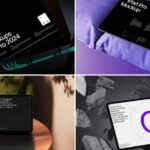Augmented Reality (AR) and Virtual Reality (VR) have stepped out of science fiction and strutted right into the marketer’s toolkit. No longer the preserve of tech weeklies or living room dreamers, these two are the rising stars of brand engagement – offering businesses a shiny box of tricks to attract and intrigue new audiences.
For marketers with creative itchiness, AR and VR are definitely names worth scribbling on your strategy napkin. Strap yourself in: we’re about to journey through today’s landscape of AR and VR, and how they can give your marketing efforts that much-needed extra sizzle.
The Current State of AR and VR
Let’s face it: AR and VR are shaking hands – and sometimes high-fiving – with digital content like never before. AR, the Swiss army knife of tech, overlays fun and functional digital elements onto real-world views, usually via your trusty smartphone. VR is the escapist: with a quick slip of a headset, you’re transported from your couch to a world where your emails can’t find you.
What started as playgrounds for hardcore gamers and gadget gurus have now elbowed their way into medicine, classrooms, and – surprise! – the world of branding and retail. With more AR-friendly devices circulating than ever (some would say they breed faster than cables in a junk drawer), there’s no longer an excuse to stay on the sidelines.
AR and VR in Digital Marketing
Digital marketing just put on a pair of rocket boots. AR and VR promise experiences so interactive that they make the classic banner ad look like a soggy sandwich. Consider: a shopper plopping a virtual chair in their living room with a swipe, or a vacationer “walking” the halls of a distant resort – that’s a far cry from clicking through flat product pics. These moments don’t just dazzle; they build real connections, turning curiosity into loyalty with style to spare.
AR has already burst onto the scene with virtual try-ons, interactive displays, and magic mirrors in store aisles. VR, meanwhile, is rolling out the welcome mat with immersive brand worlds, exclusive events, and tours that never require a suitcase. Think of it this way: if traditional content is a friendly wave, AR and VR are the full welcome parade.
How to Get Started with AR and VR
Worried that diving into AR and VR requires a laboratory and a team of white-coated geniuses? Relax – it’s not rocket science, and you won’t need a Delorean. Dip a toe in with social media: Instagram and Snapchat have AR filter tools that let you jazz up your branding and make your followers double-take. Want to go all in? Partner with a creative agency such as King Kong to craft a custom AR app or a VR brand adventure that’ll earn you more buzz than a beehive.
But remember: start with a clear target. Are you reaching for a viral moment, a surge in sales, or teaching customers about your products (without putting them into a mild coma)? Knowing your aim helps you avoid shiny-toy syndrome and get a real handle on ROI.
Redefining Customer Engagement
If marketing is all about sparking connections, AR and VR are your secret handshake above the crowd. These tools help you meet customers where they are – and whisk them away to where they want to be – providing value and a dash of wide-eyed delight. In a world where “memorable” is the new currency, immersive experiences can be your not-so-secret weapon.
So, as you chart your next campaign, think of AR and VR as the spark that might set off a fire of engagement. The future is ringing your doorbell – and this time, it’s holding a headset.






